Fluid transitions and charming spirit
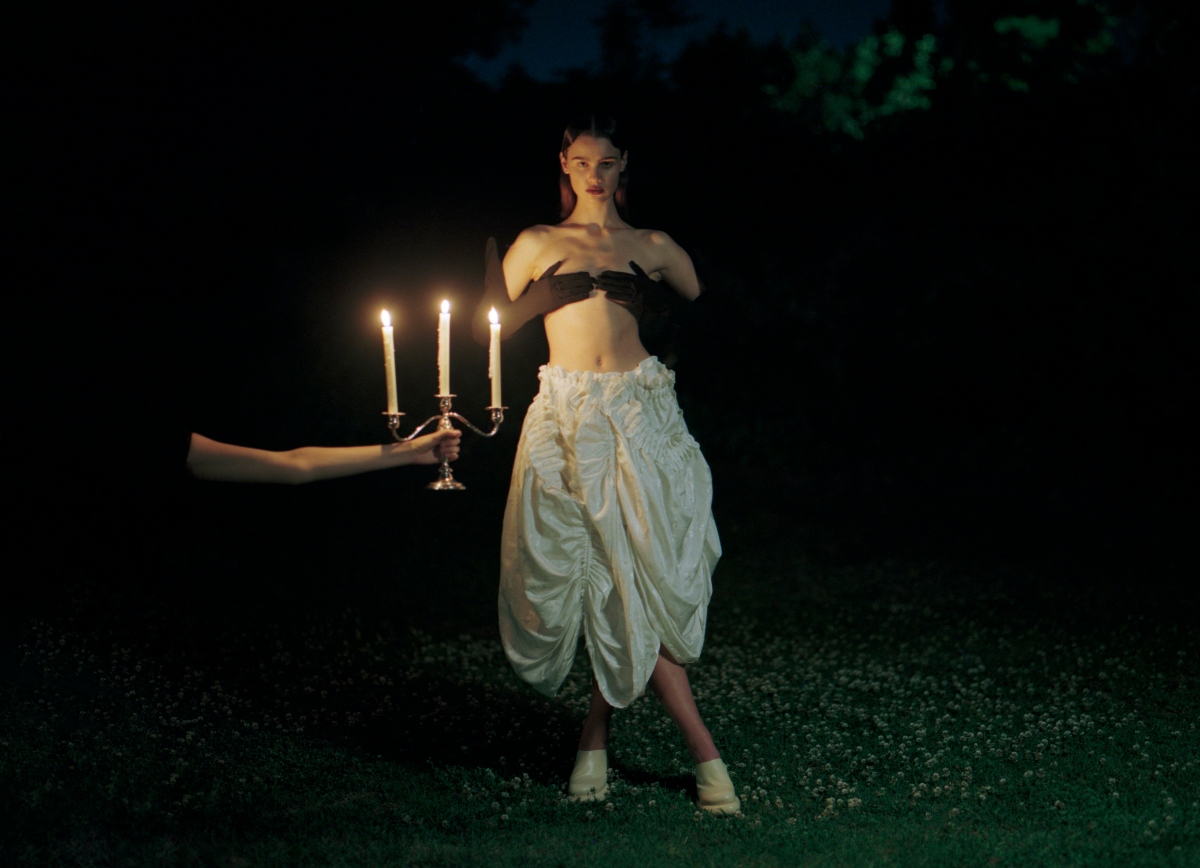
The L.A. based designer and artist Kimberly Corday is the moment. From her fluid transition between mediums and charming spirit, she is one of California’s most exciting creative enigmas. Her designs are perfectly pictured here by the photographer Richard Ramirez Jr. – who captures the innocent beauty of the world and the people who inhabit it. The natural ethereal vibe poetically comes together in this visual essay (titled “Tales of a Woeful Romance”) showcases the frilly punk that is Corday. We got the chance to catch up with Corday to talk about her journey, philosophy, and everything in between.
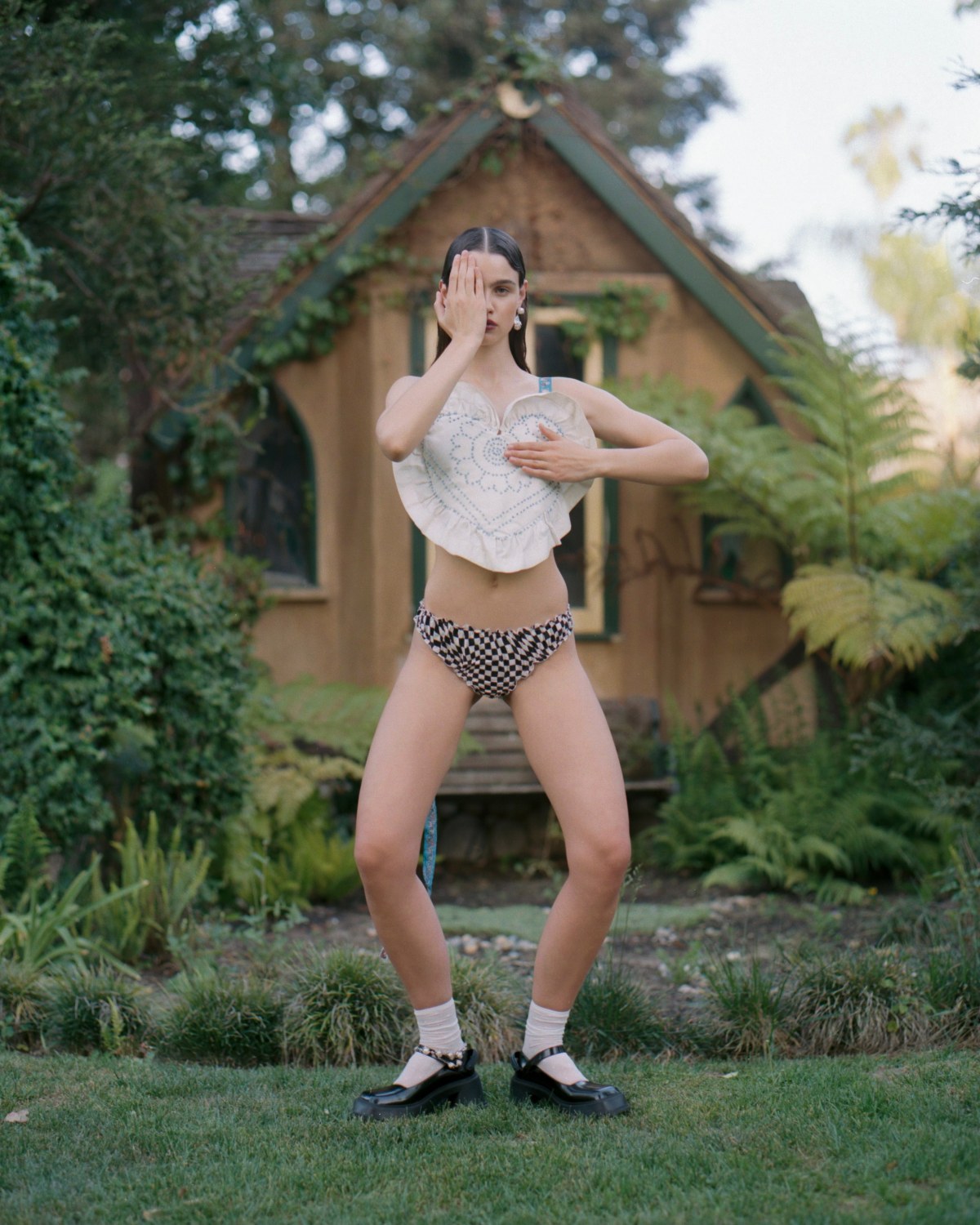
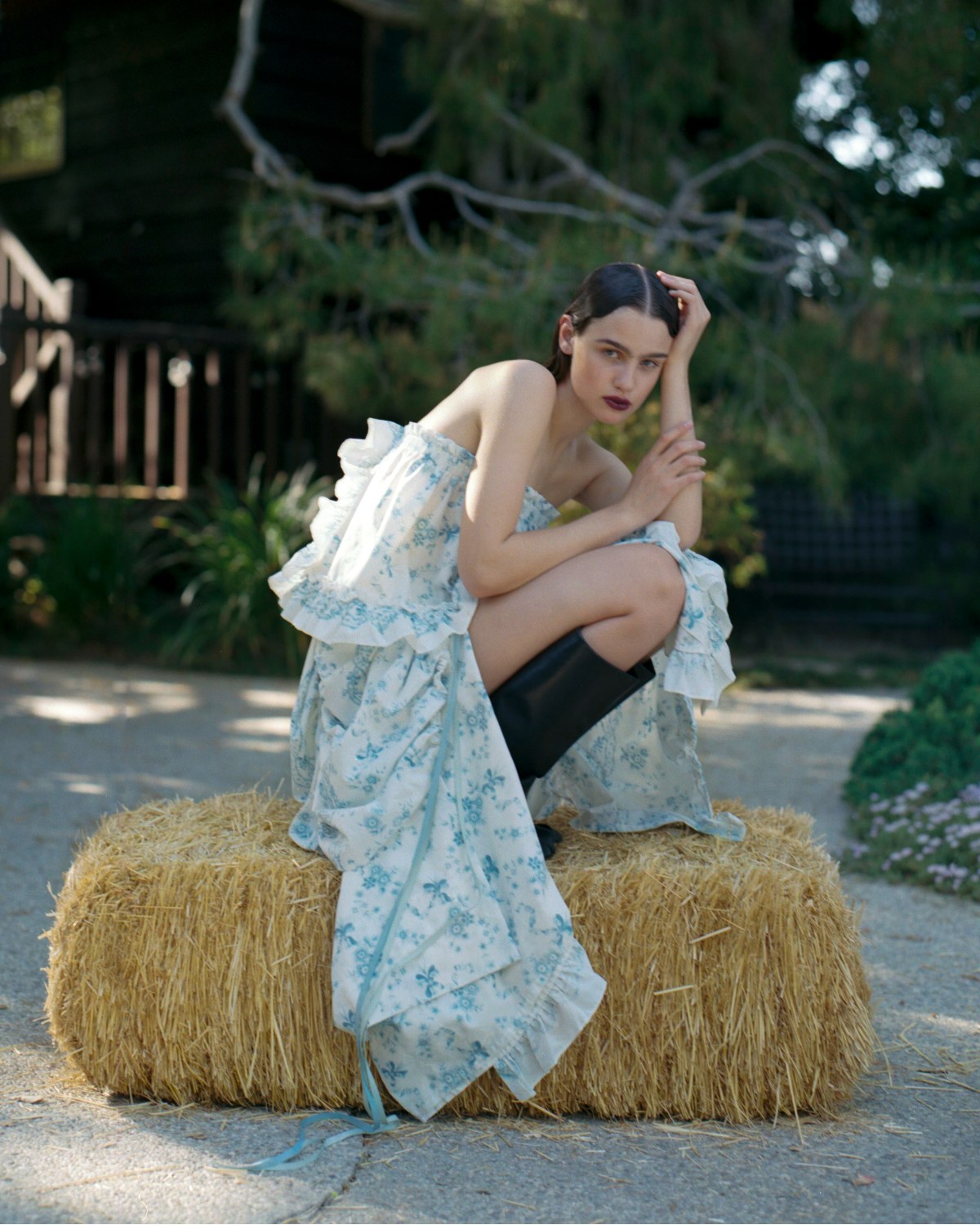
Starting off, how are you doing today?
K: I’m just chirpy! Back in LA after a stretch of travelling. It feels good to be home.
Could you walk me through your personal artistic journey?
K: I can’t recall a time when I wasn’t creating or at least seeking out inspiration. As a kid, I’d carve little portraits into the kitchen table (sorry mom) and spend hours studying impressionist paintings at The Getty. I started painting when I was seven and went on to study fine art at Rhode Island School of Design. When I hit a wall during senior year, a painting professor encouraged me to incorporate embroidery in my work which sparked my interest in textile art. As a postgrad, I taught myself how to weave on a rickety table loom using butcher twine. What started as an investigation into new material slowly turned into a series of exhibitions and custom pieces for boutiques and restaurants across the country. During lockdown, my friend asked if I’d ever consider putting my work on a body- “activating the piece,” so to speak. The next thing I knew I had made my first collection of clothing. It feels like the most honest work I’ve made. Plus, it requires me to work with a team of extraordinary photographers and stylists without whom the work would not be possible.
What have been some of your biggest challenges along the way?
K: Overcoming self-doubt.
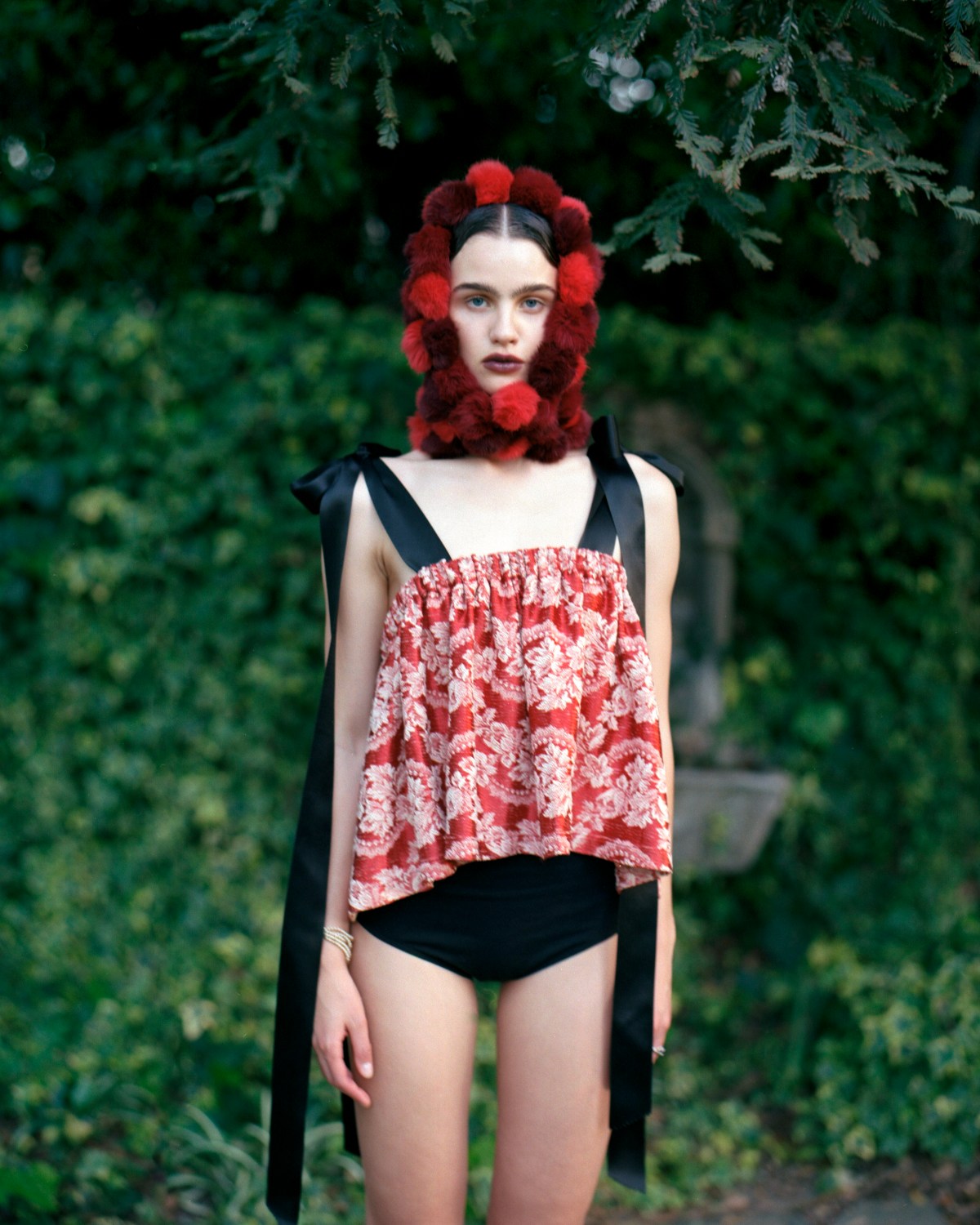
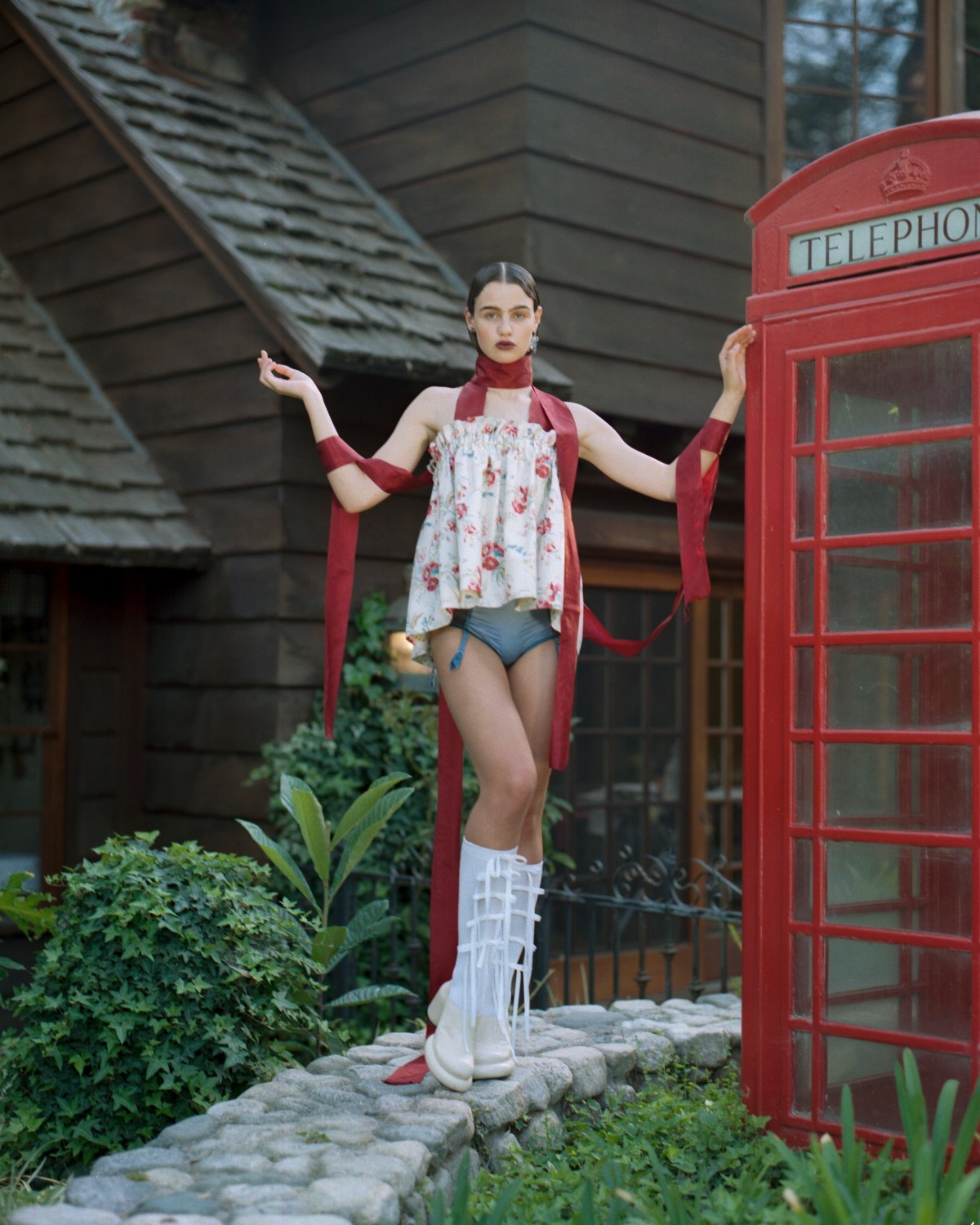
Where do you get your inspiration from?
K: Tiepolo’s frescos, Victorian cookbooks, Fragonard (always), Bach’s harpsichord concertos, John William Waterhouse, pretty much any 18th/19th-century painting shrouded in darkness.
And why do you think you find those sources of inspiration so inspiring?
K: People ask me why I’m drawn to Rococo art- how could a genre marked by frivolity ignite a body of work? It’s not just the extravagance that captivates me. It’s the mischief and sexuality that lie beneath (i.e. puckish cherubs, rosy rumps, voyeurism, eroticism under the guise of gaiety, etc). It’s like a syrupy dessert cut with lemon and salt. I’m trying to achieve that same tension or surprise in my work. At first glance, one could write off my clothes as “girly,” but if you look closer there’s cockeyed stitching, tattered feathers, mismatched hankies- all signs of punkdom. I think that’s why Sofia Coppola’s “Marie Antoinette” became such a cult classic. She took a classical subject, rubbed some dirt in it, turned it on its head and made us rethink 18th-century aristocracy, even femininity, as a result.
What has been your relationship to painting? What has been the power of painting for you?
K: Painting was a focal point of the little island I built for myself as a kid where I would escape, play and be myself. Paintings were some of my earliest friends- I could hang out with them any time I wanted just by picking up a book. They’re always there- waiting for us to explore, learn from, fall in and out of love with and “commune with our ancestors” as Jerry Saltz once said.
How does your experience with other mediums (such as painting) impact how you approach design?
K: It’s almost like art, specifically classical painting, is my Higher Power (if I had to choose one). My way of honouring it or translating it at this particular stage in my career happens to be in the form of fashion design.
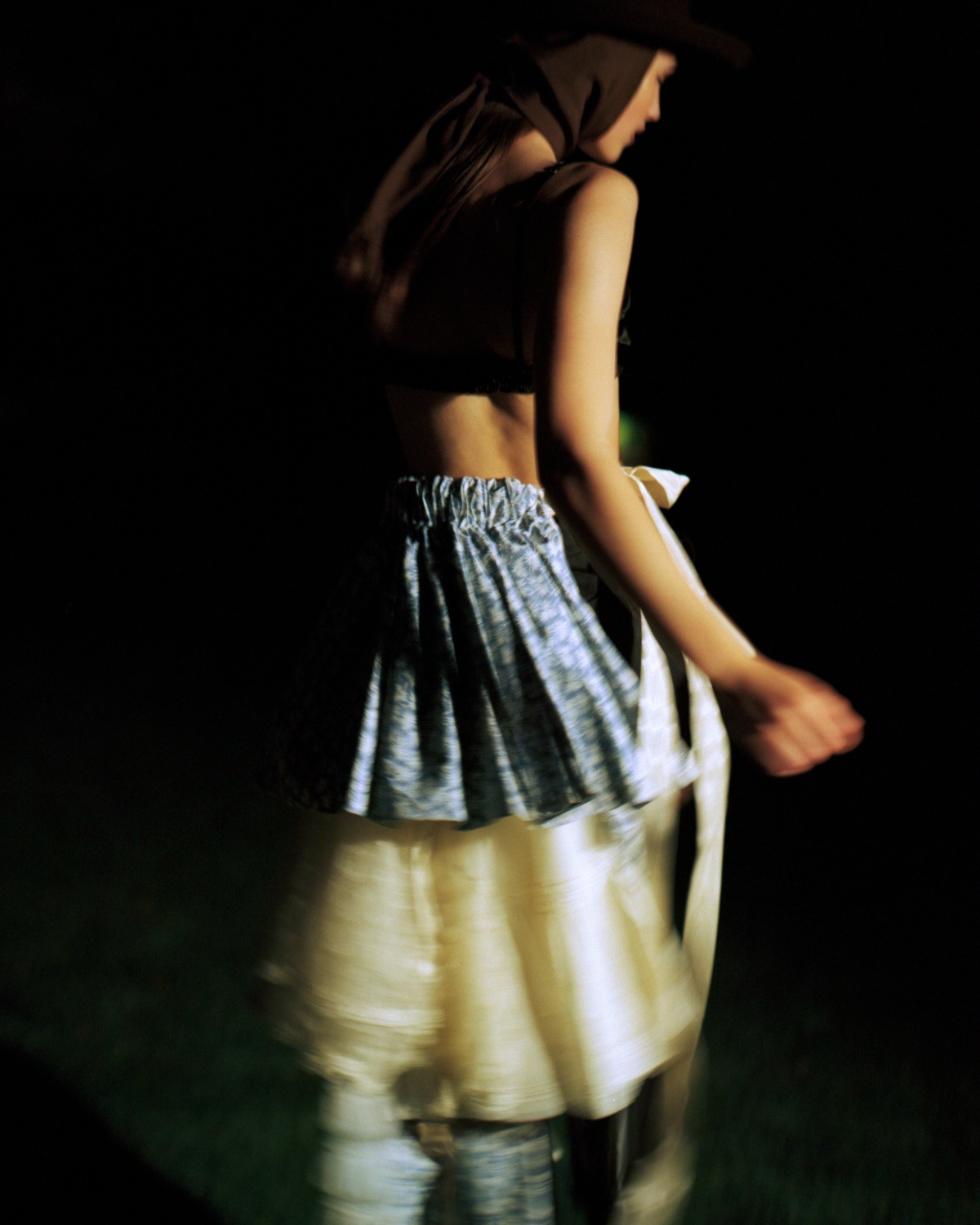
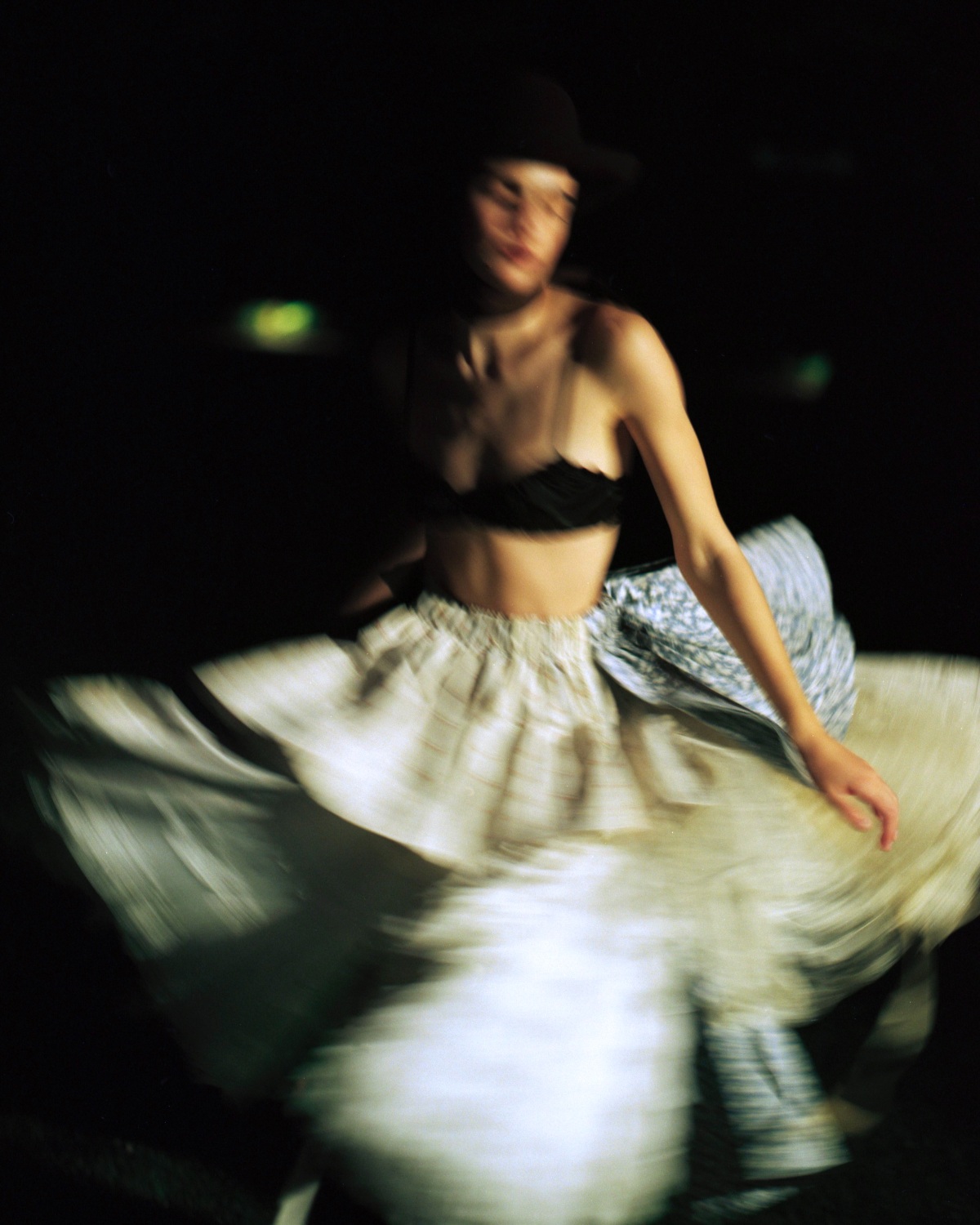
Can you walk me a little more through your design process?
K: I repurpose, cut, collage, and otherwise manipulate tactile materials such as oldfangled upholstery, fur skins, and boudoir remnants to make hauntingly coquettish assemblages that unfold in an aesthetic limbo between punk and unapologetically pretty. My process is Frankensteinian. It starts with plucking scraps from my heap of thrifted textiles, deconstructing the puzzle pieces and putting them back together again in an unexpected way (bunched, upended, bisected). I never know what I’m going to make beforehand- I just tinker with the materials and my thoughts are intervened by an apparition of what the piece will look like. I’m shown the end product, I just have to fathom how to get there. Dylan once touched on this phenomenon: “It’s like a ghost is writing…except the ghost picked me to write the song.”
I’ve read that your work is ‘a wink at the institutional dismissal of decorative arts” (which by the way I love), could you elaborate on this idea?
K: Thanks! It’s a concept I’m still exploring. Like, why does our culture celebrate minimalism over maximalism? A framed painting over a flamboyant clock? Why are Fabergé eggs and inherently “feminine” objects placed inconspicuously in major museums, only to be found while you’re looking for the bathroom? I’m intrigued by this discrepancy and its resemblance to sexism. Hairsplitting craftsmanship is the only mode of creating I really know. Every time I try to reel it in or make something understated, I’m faced with the beginnings of another ornate garment. I’ve always felt seen by decorative arts for that reason. Taking it to the nth degree feels subversive by nature- which circles back to that punk/elegance dichotomy. I guess it’s more of a middle finger than a wink.
Fashion design has a unique relationship with the body, how would you say your work engages with the body of the wearer?
K: I feel like my work is dependent on the wearer. Once someone inhabits a piece, my vision is that much closer to completion. That symbiotic relationship eliminates the isolation I felt as a painter. A painting stops as soon as the artist steps away from it, leaving room for doubt, alienation, and an unfulfilling sense of self-sufficiency (at least in my experience). Clothing design, on the other hand, feels similar to filmmaking in that it starts with one idea, one person, but necessitates the participation of many in order to carry out its life cycle. There’s something thrilling about turning your cocoon over to your team- you get to witness it hatch, take flight, and coalesce with harmonious forces.
Your designs are a beautiful tapestry of textiles and textures that
K: have a totally punk feel while maintaining their elegance. How do these two (elegance and punk) both work together and come into tension in your designs? I’m interested in how the two start to fuse and fight when they occur in the same space. But when I’m making a piece, I’m not trying to summon that dichotomy. It just happens. I suppose it’s a subconscious extension of self. Like, my wardrobe is hyper fem with a twist of punk (think a ruffled gingham skirt with a Bad Brains shirt); on any given day I’ll listen to Vivaldi and Minor Threat in the same sitting; I’m overly polite with a trucker’s mouth. These dualities sum up both my work and personality equal parts sweet and tart.
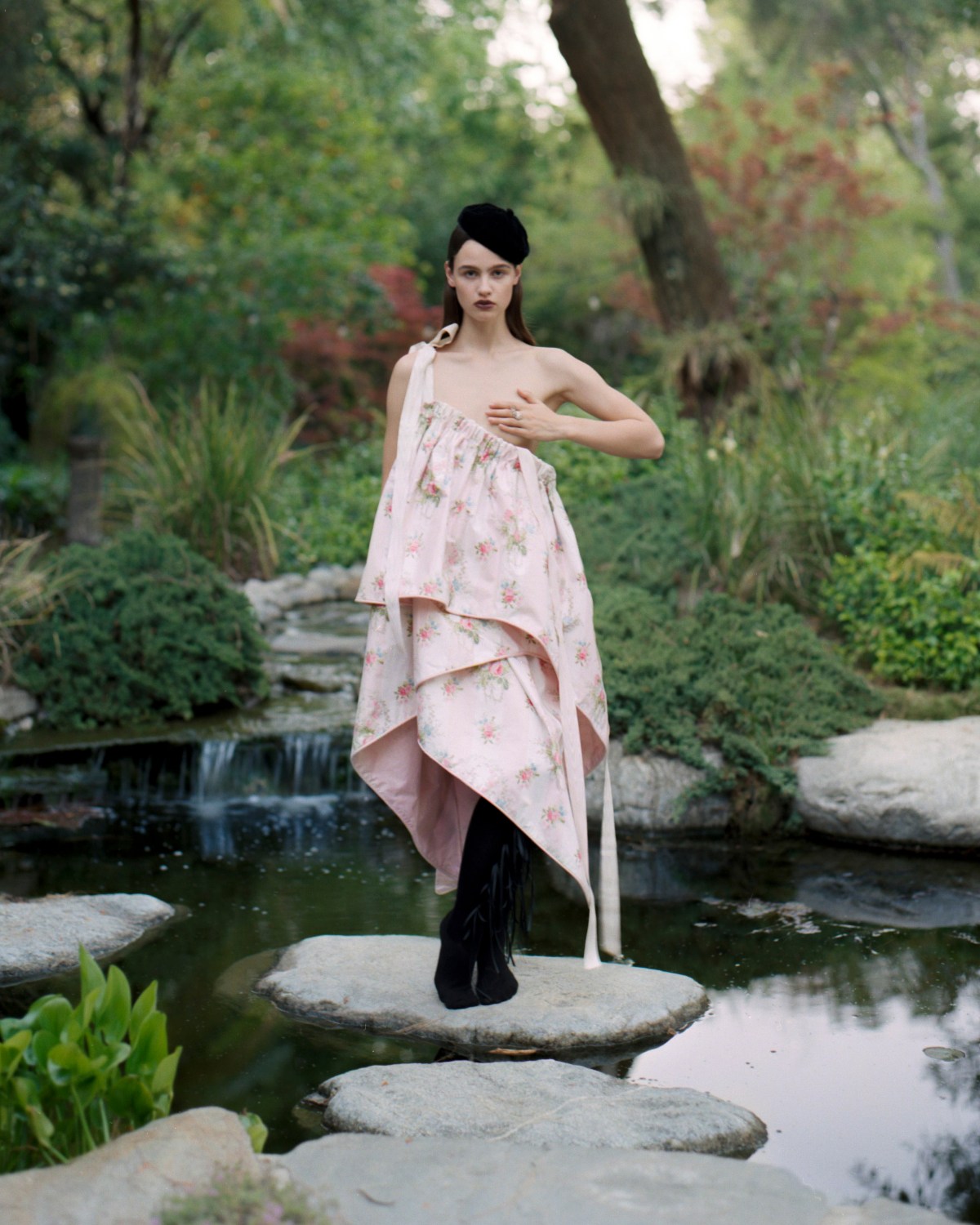
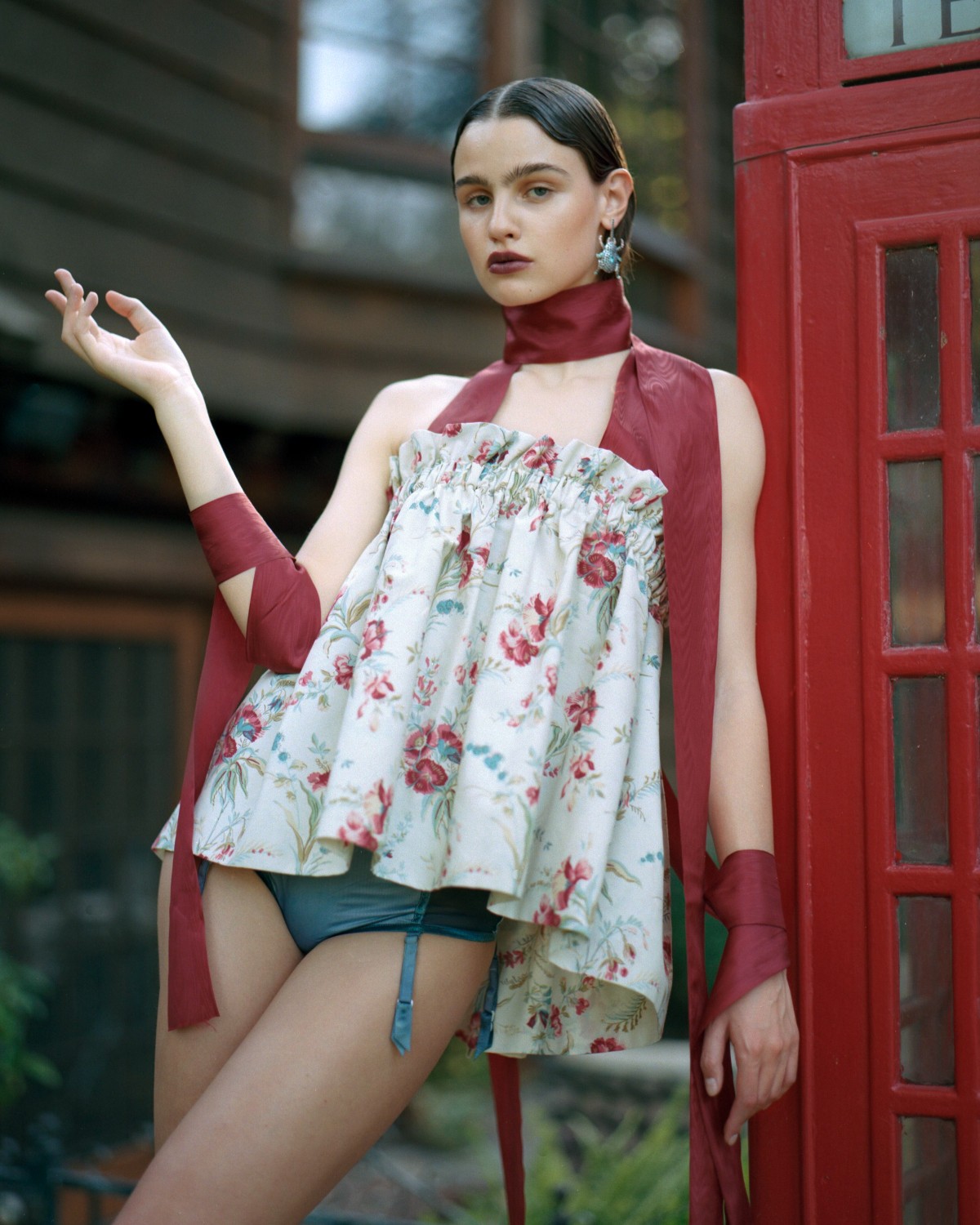
What are your thoughts on being a 21st-century artist amid our climate crisis?
K: I think it is our responsibility as today’s creatives to respond earnestly to global warming. Any artist can employ sustainable methods in their workplace, source low-impact materials, and rebuke hyper-consumerism. I’m seeing a lot of independent makers come out with zero-waste art/designs lately. It’s a growing movement and community that I am proud to be a part of. I have a deep connection with nature in both my personal and creative life. Maintaining a green studio is one of the ways I can give back.
If you can design a piece for anyone, who would it be? Why?
K: Oh my God, this is so hard. It’s almost impossible to list one person but my answer today would be Chloë Sevigny. She’s the 90s subculture it-girl you can’t put in a box. She challenges what it means to be and dress like a woman, which is what I hope to accomplish through my designs.
What are you manifesting for the rest of 2022?
K: I’d love to make custom pieces for musicians, produce a short film and coordinate a runway show.
And lastly, what do you hope for the world?
K: I hope its inhabitants remember to be kind.
Photos courtesy of Richard Ramierz Jr.
Clothes and Creative direction by Kimberly Corday
Styled by Paige Bittner
Modelled by Anna Iurkova
Hair and Makeup by Lisa-Marie Powell
Photography assistance by Bibs Moreno
Words by Ella Paritsky